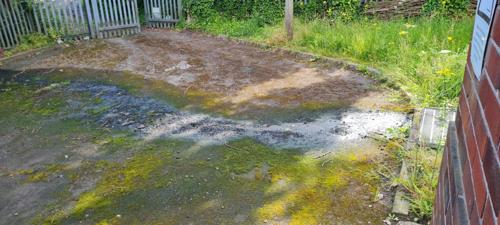Written from the field by Senior Project Engineer Oliver Port
When the data leads to a real-world discovery
Leak detection isn’t just about raising alarms, it’s about delivering insight that operators can act on. In this blog, we look at a case where our water hardware identified a rising sewer main leak immediately as it happened, before becoming an environmental issue and how, under shut-in conditions, a leak location estimate was given and later confirmed during a site visit.
A flooded valve pit just outside the pumping station matched the estimated location from the hardware's analysis. It’s a clear example of how combining reliable data with field verification helps close the loop between system monitoring and on-site decision-making.
Leak detection: slow pressure loss under shut-in
From high pressure transients to resealing leaks, the culmination of all previous events in this blog series eventually resulted in a pipeline failure. The large and sustained leak was first detected and reported to the customer by our hardware.

Figure 1: Sustained pressure loss in the pipeline over several days
At this stage, the leak was entirely below ground level so was not visible to the customer, even when walking the entire line. Eventually, days later, the valve chamber near the pumping station was visibly flooded and water had overflowed into the surrounding area (see Figure 2). That field evidence confirmed what the system had already indicated: this was no false alarm. The water hardware had proven that it could alert us to the leak before any other conventional detection method, providing the operator with valuable time and insight.

Figure 2: Field photo of the valve chamber near the pump station, where overflow into the surrounding area confirmed a significant leak
Pinpointing the leak location
While the water utility company was preparing to repair the failed valve, a more pronounced event followed. The water hardware detected a long duration of pressure decay during a four-hour shut-in period, with the pipeline losing nearly 60% of its pressure. This triggered both the pressure decay and low-pressure alarms. Using advanced data analysis, the system estimated the leak’s location around 3 m above the pumping station, placing it within the first 50 meters of pipe, validating the accuracy of the unit's shut-in leak location module.
Although the flooding had been noted previously, the detailed location estimate from our water hardware helped validate that this specific section of pipeline was the source. It provided a clear link between field conditions and the underlying pressure behavior, demonstrating how the system can support investigation even after the immediate event has passed.
This was the same location our unit had identified using pressure data alone. The combination of real-time detection and field verification gave us complete certainty. This wasn’t a false alarm and it wasn’t a small event.
A combined approach to pipeline monitoring
This event underlines why combining technology and fieldwork is so important. Our water hardware didn’t just raise an alarm. It provided:
- Clear indicators of leak activity under shut-in conditions
- A location estimate
- Processed high resolution data to support root cause analysis
This meant field teams could act quickly and with context.
Closing the loop on water leak detection
From pressure spikes and calibration trials to subtle failures and real world overflows, this series has highlighted how our water hardware performs in challenging conditions.
Rising mains can be difficult to monitor, but with the right hardware and a field-led approach, they don’t have to be unpredictable.
Next up: from quality data to operational insight
In the next blog of my insights in wastewater from the field, I’ll take a look at a user-friendly tool to provide operational insight into pipelines based on quality data from our water hardware.
